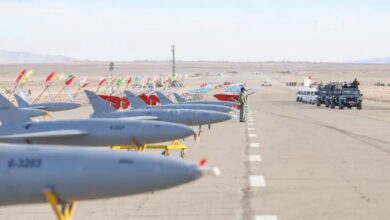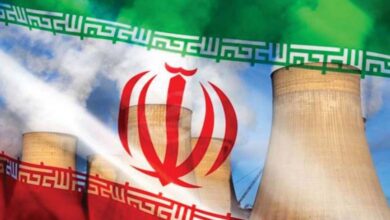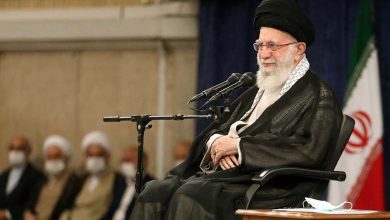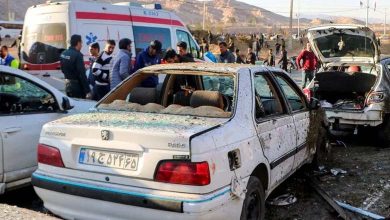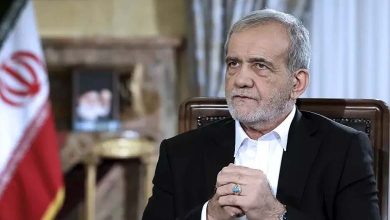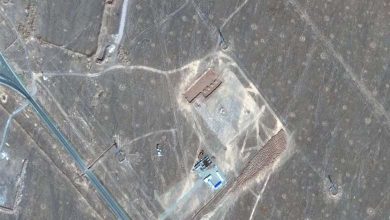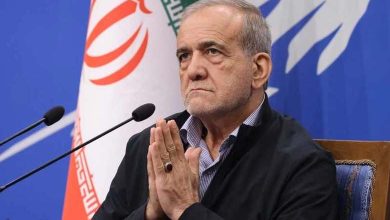Spear, shield, and a kneeling emperor: Iran wields the sword of history against its rivals
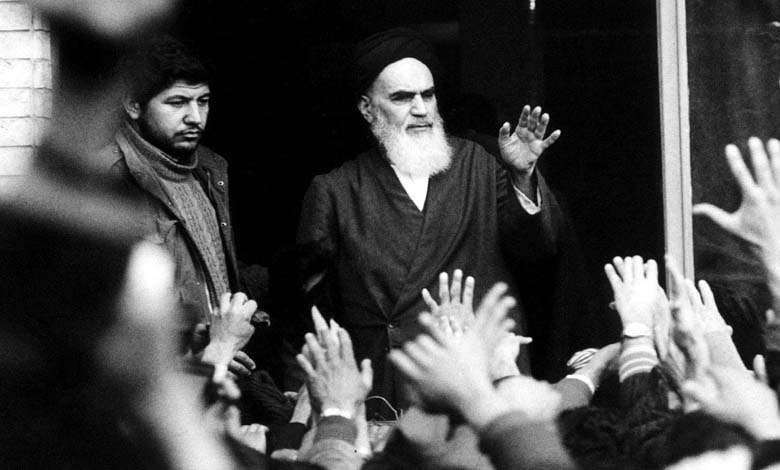
A spear and a shield, symbols of war and defense, and a kneeling emperor—together forming a monument that recounts an ancient Persian victory, yet carries modern political messages directed at Iran’s adversaries.
In the early hours of Saturday morning, thousands of Iranians took part in a ceremony inaugurating a new monument in central Tehran, celebrating a historic victory of a Persian king over foreign enemies—a continuation of the nationalist tone that has followed the recent war with Israel.
“You will kneel again”
The stone monument, erected in Tehran’s Enqelab (“Revolution”) Square, depicts the Sassanid king Shapur I on horseback beside the Roman emperor Valerian, who was captured by the Persian ruler in the third century AD.
A giant banner displayed during the event portrayed an ancient Persian warrior and a modern Iranian soldier in military uniform, both holding the same spear and bearing shields decorated with a map of Iran and the slogan: “You will kneel before Iran again.”
Fatemeh Roshan Bakhsh, 40, who attended the inauguration, told Agence France-Presse: “Stories like this have repeated throughout history, and those who attack Iran will always face the same fate.”
Moein, a 21-year-old student, said that although he had read about King Shapur I’s triumph “in history books,” ceremonies like Friday night’s “have a positive impact on people’s morale.”
“Our nation,” he added, “has always been, and will always remain, victorious.”
Davoud Goudarzi, from Tehran’s municipality, which organized the event, explained that the project was “designed and carried out under the guidance” of Supreme Leader Ali Khamenei.
He noted that the monument would remain temporarily in Enqelab Square before being moved to one of the main entrances of the capital.
The sword of history
Alongside the monument, organizers displayed portraits of fallen Iranian military commanders, including Qassem Soleimani, who was killed in a U.S. strike in Baghdad in early 2020, and Brigadier General Amir Ali Hajizadeh, one of the commanders killed in Israeli strikes at the start of the June 13 offensive against Iran.
Large banners depicted iconic figures from Persian history as well as modern moments, such as the 2016 incident when Iran’s Revolutionary Guard captured a U.S. military vessel.
Since the twelve-day war with Israel—during which Tel Aviv targeted nuclear, military, and civilian sites—Iran has held a series of similar commemorative events.
During that conflict, the United States also intervened, bombing three nuclear facilities, prompting Tehran to retaliate with missile and drone strikes against Israel.
For example, last June, authorities unveiled a massive statue of Arash the Archer, a legendary hero from Persian mythology, in Vanak Square in northern Tehran.


